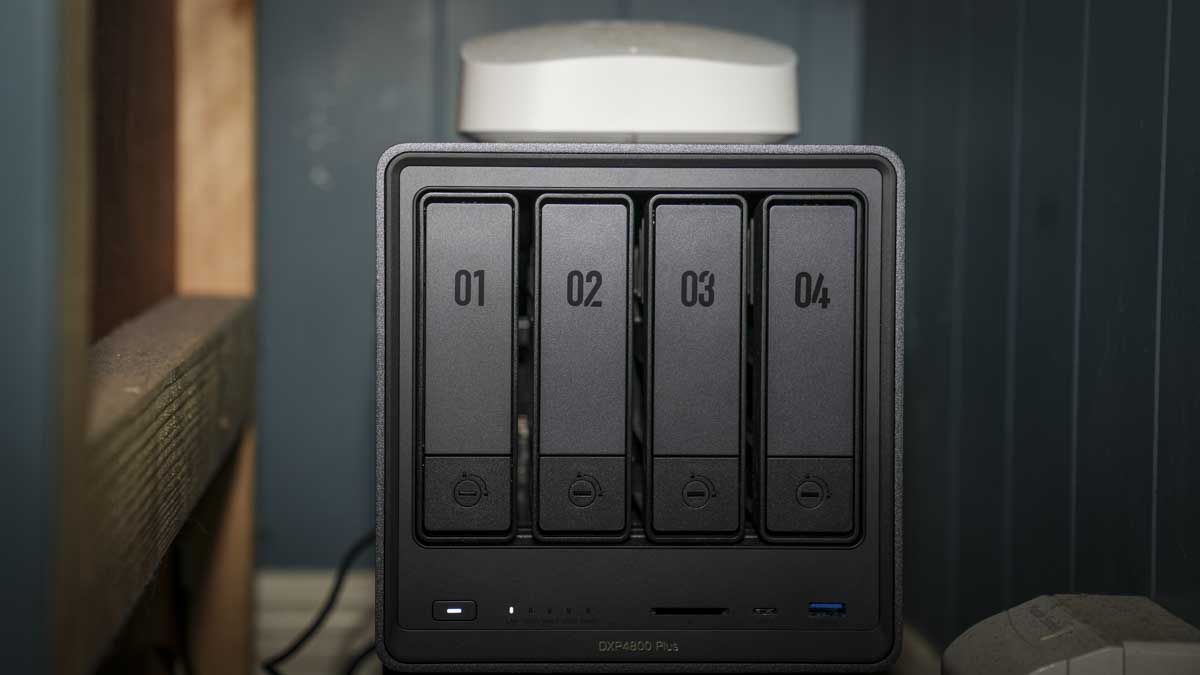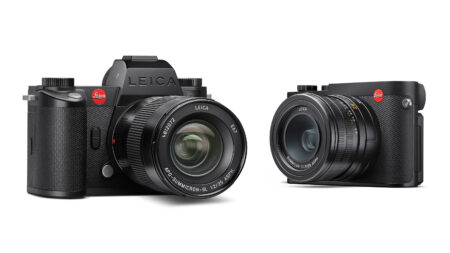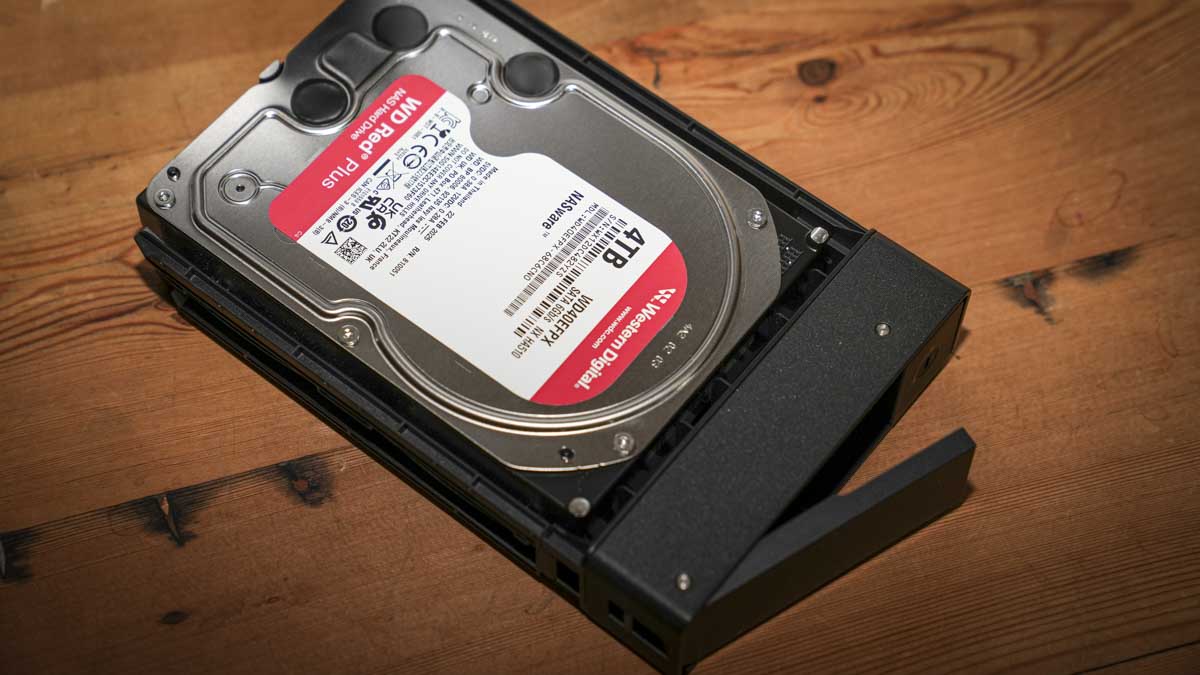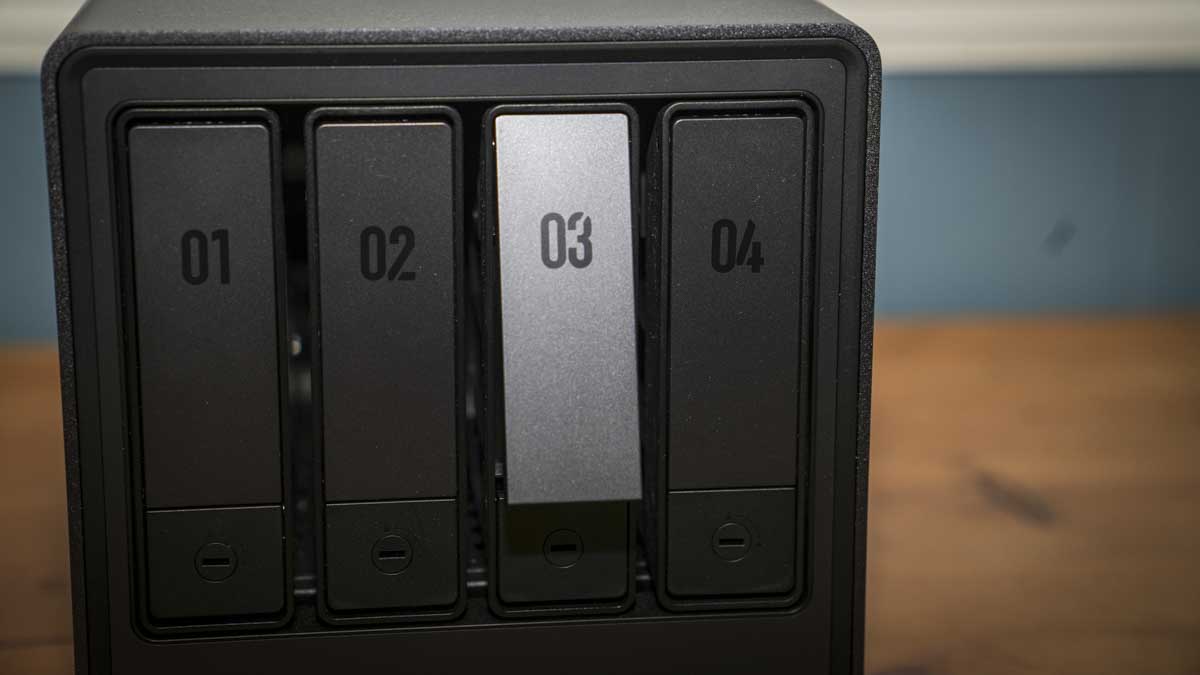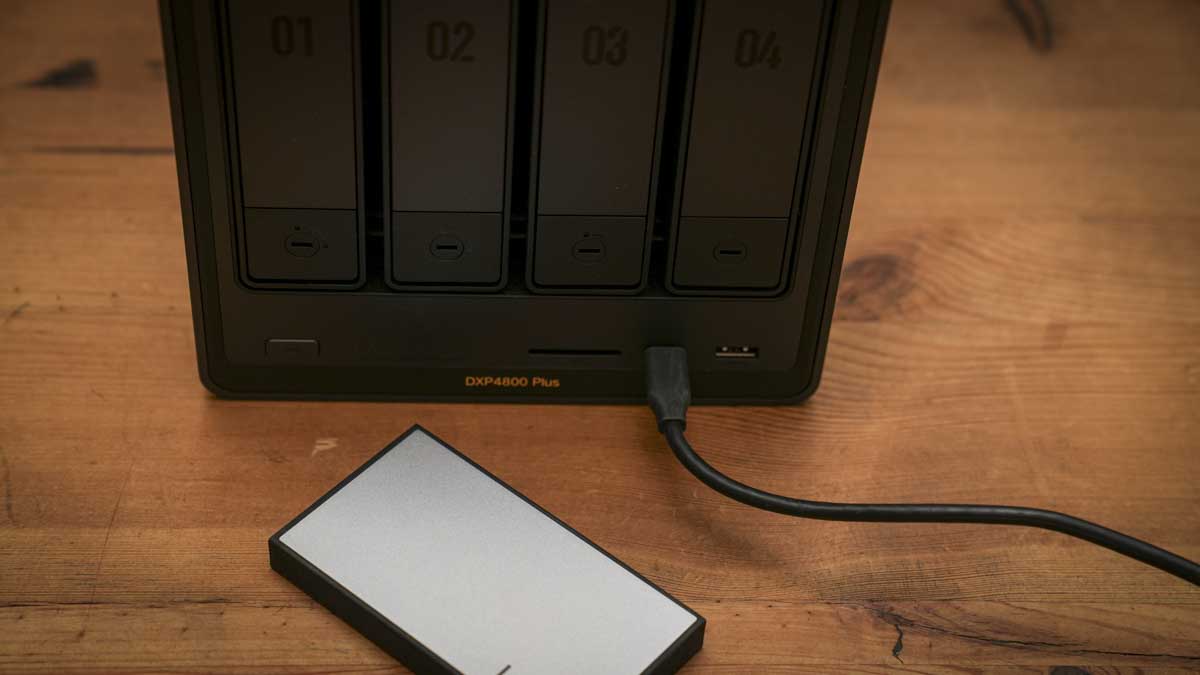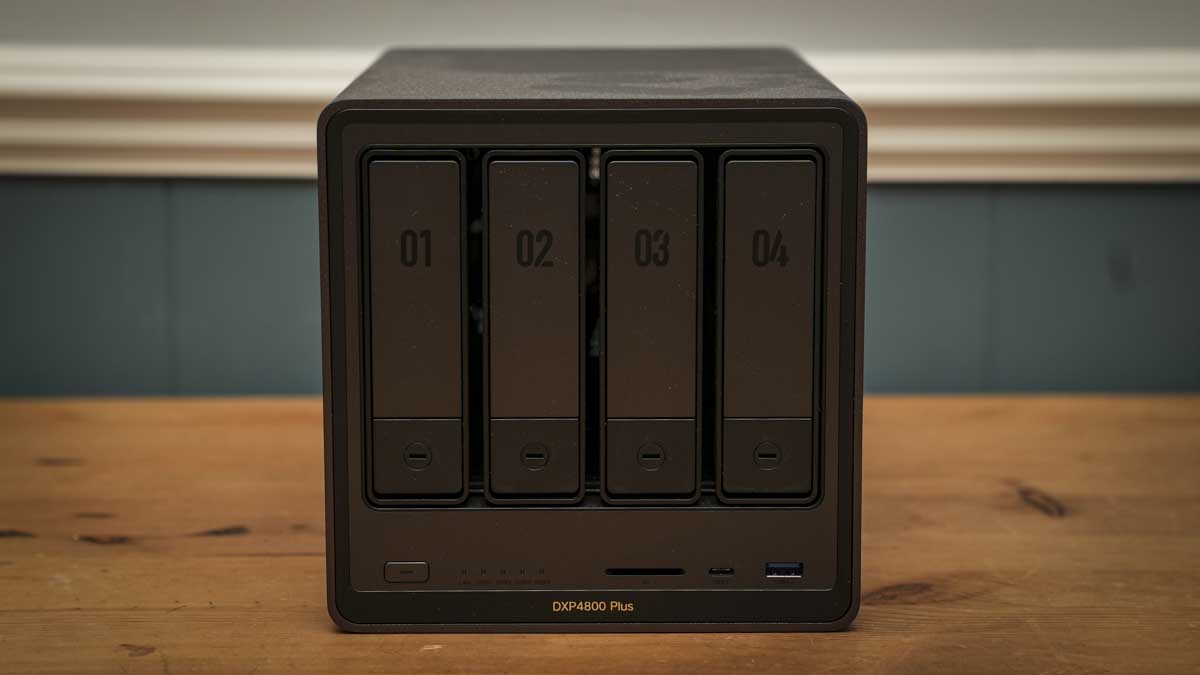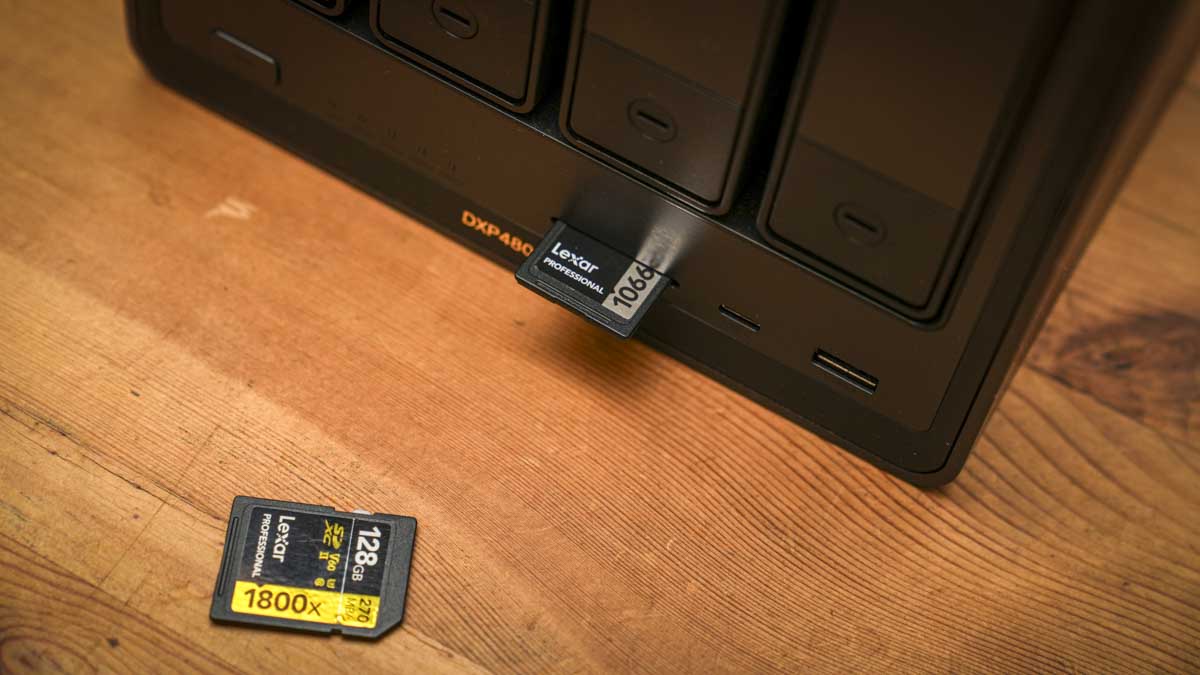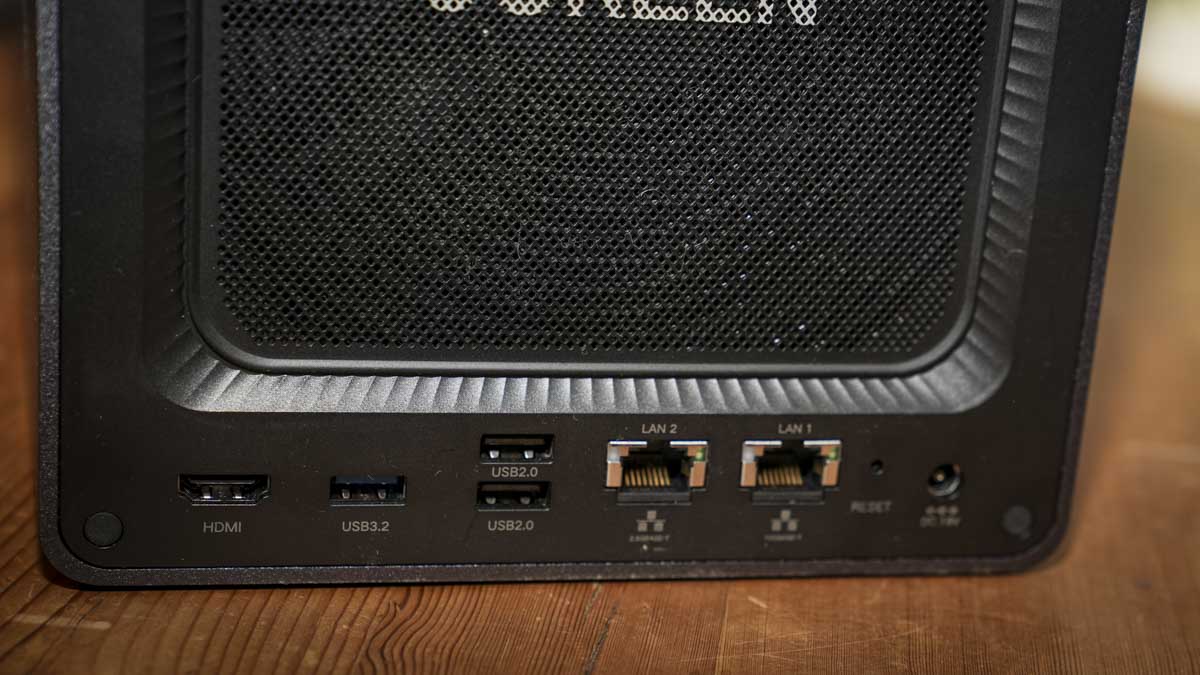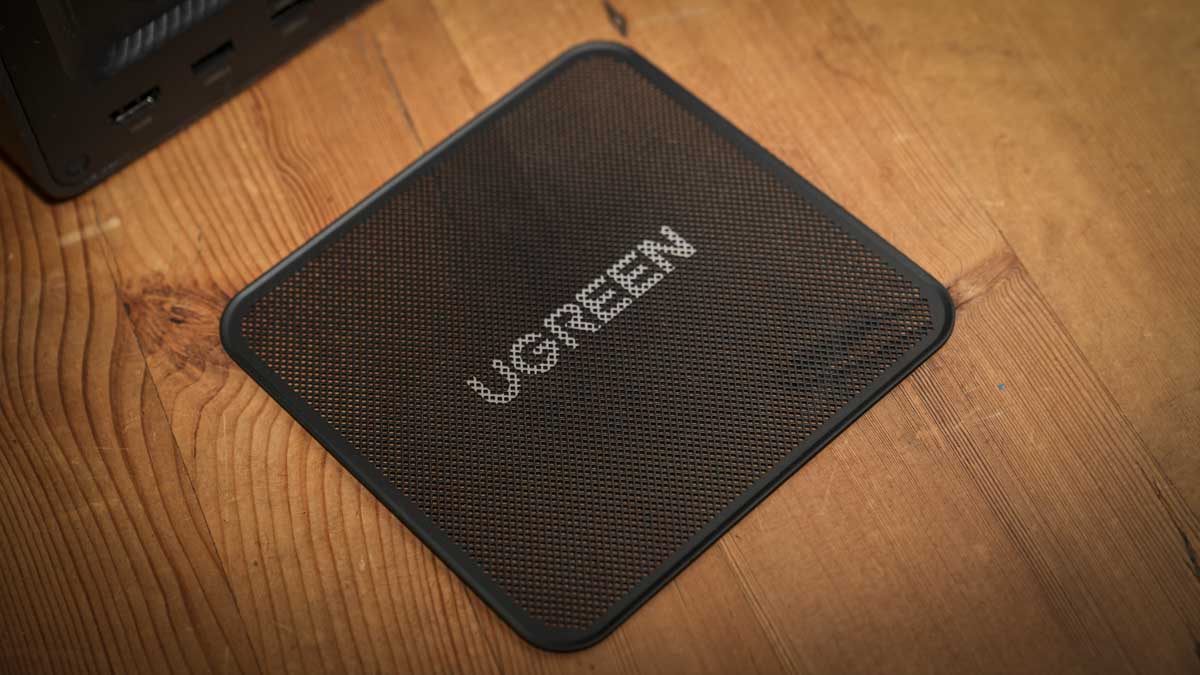The UGREEN DXP4800 Plus is a four-bay NAS designed for creative professionals such as photographers and videographers. It is essentially a network-attached drive; you connect it to your router using a standard network cable, then you can access it using the UGREEN software or connect in the usual way for a network-attached drive through the IP.
What really makes this drive stand out is the fact that you can configure the drives it holds yourself. In this review, I’ve used four 8 TB Western Digital Red drives, giving me 32 TB of potential storage, and I can divide and configure this through UGREEN’s UGOS software.
If you’re unfamiliar with NAS systems, while they might look like just a normal external drive, there’s actually a lot more to them. Unlike a normal desktop drive, it has its own computer inside, running UGREEN’s own OS.
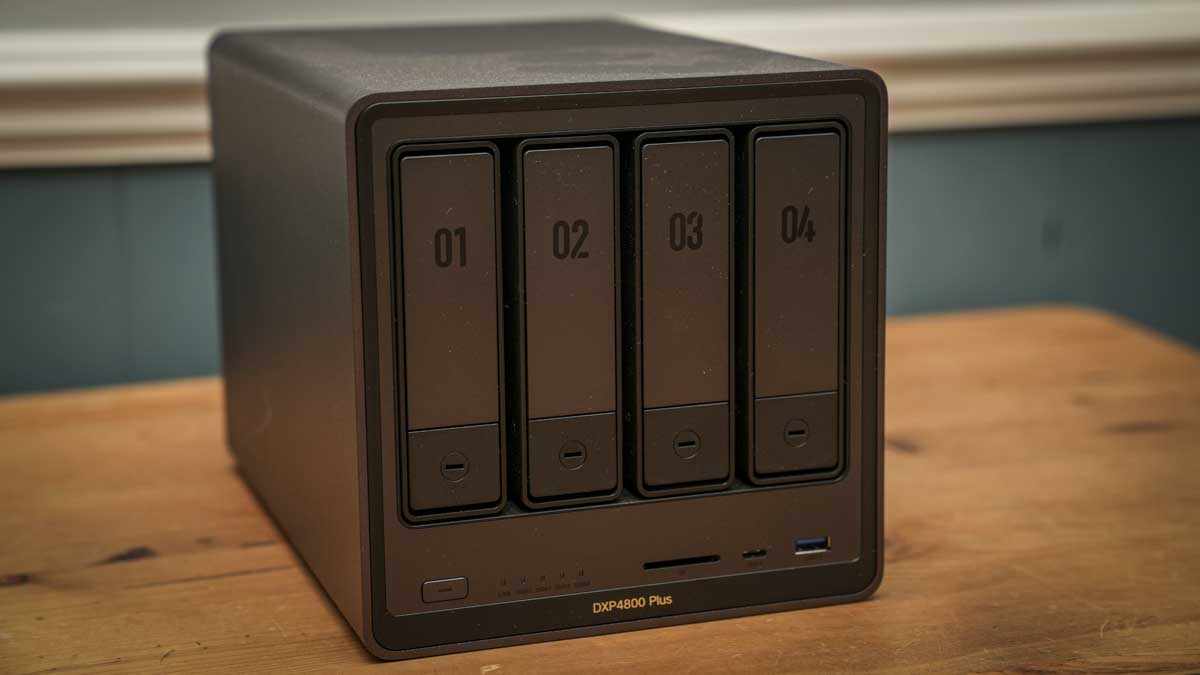
Running in the background is an Intel Pentium Gold 8505 CPU with 8 GB of DDR5 RAM, which, for this level of NAS, is quite impressive.
While I’ve used 8TB drives in the configuration of this drive, it has the potential of installing 30 TB HDDs, so 30 TB per bay, giving you a total of 120 TB, which really does make it an ideal option for both photo and video archiving. Another standout feature is its very fast network connection. While many NAS options run at 2.5 or 5 Gb/s, this particular model runs at a massive 10 Gb/s, which is pretty much top tier at present.
The price also makes this NAS extremely affordable compared with other NAS boxes, although don’t get me wrong it is still expensive, and with features such as HDMI out for direct 4K playback, hot-swappable bays so drives can be removed and replaced if needed, and AI-assisted photo tagging and filtering, it makes it a perfect option for professionals, especially photographers and videographers.

